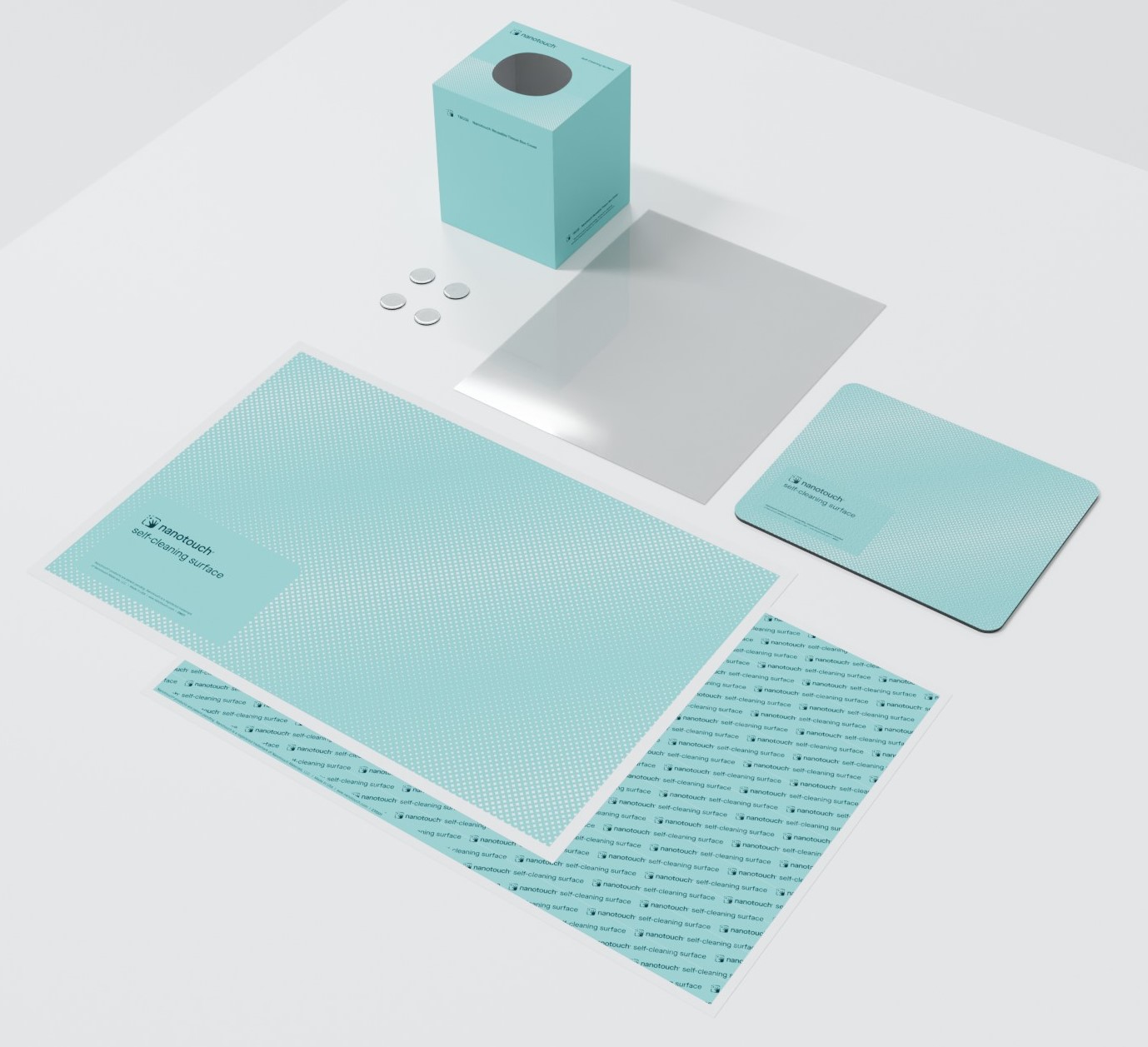by Brianna Crandall — February 4, 2022 — Nanotouch Materials, provider of green, self-cleaning surfaces, has just announced the release of Clean Workstation Kits designed to help create a more hygienic work environment as employees continue to return to the workplace.

Nanotouch Clean Workstation Kit self-cleaning surfaces kill germs on desks, phones and computers, whether workers are remote or on-site. Image courtesy Nanotouch
Whether your staff are on a regular, staggered or hybrid schedule, these kits can help ensure their workstations stay clean at all times — including employees working remotely, off-campus or in the field.
The kits include a variety of products that employ Nanotouch’s self-cleaning surfaces that work 24/7 to oxidize all organic contaminants using nanotechnology and the power of light. Each personal workstation kit includes a large portable mat, mouse pad, 9×12 touchscreen film, tissue box cover, tabs for a cell phone or tablet to separate from surfaces, and another self-cleaning surface that users can easily cut for custom applications like laptops or water bottles.
Dennis Hackemeyer, co-founder of Nanotouch Materials, remarked:
Cleanliness is top of mind for both employers and employees, whether they are back in the office entirely, using a hybrid approach, flex spaces or shared spaces or preparing to reopen. Think about it: Cleanliness starts with the places we touch the most — our own desks, phones and computers. This kit is essential for keeping employee workstations clean at all times, which in turn, helps to create a more hygienic environment in the whole facility.
Find out more about the Clean Workstation Kit on the Nanotouch website.
Blog: The Deeper Science Behind Our Self-Cleaning Surfaces
If you are into the nitty gritty of how things work and would like a deeper dive into the science behind Nanotouch self-cleaning surfaces, the company’s newest blog post breaks down the photocatalytic process and describes how it works on the self-cleaning mats and skins.
As The Deeper Science Behind Our Self-Cleaning Surfaces explains:
The short answer is that our surfaces use nanocrystal technology to create a powerful oxidation reaction when exposed to any visible light.
A longer answer is that we bond microscopic mineral nanocrystals across our touchable surfaces, using the latest in material science. When natural or artificial light hits those mineral nanocrystals, the nanocrystals actively self-clean through a natural photocatalytic oxidation process.
The full answer is longer still and includes a lot of science. Here, we break it down.
Blog: Yes, Clean is Complicated. But it Doesn’t Have to Be That Way
You’ve seen firsthand how things changed in 2020. For one, you’ve had to become an expert on all-things clean — on top of your existing responsibilities. And the push for a high level of clean by the public is unrelenting. In this recent blog post, Nanotouch’s Faun Finley show you how it can be easier and provide a forum for new opportunities.
Yes, Clean is Complicated. But it Doesn’t Have to Be That Way is available on the Nanotouch website.
Nanotouch, founded in 2012, produces a line of self-cleaning surfaces that range from door handle wraps and sleeves to elevator button covers and portable mats. Customers include nearly 30 leading pharmaceutical companies, the Top-10 commercial real estate service providers, each American professional sports league, 250 educational campuses, elite four- and five-star hotels, major financial institutions and all levels of government.





